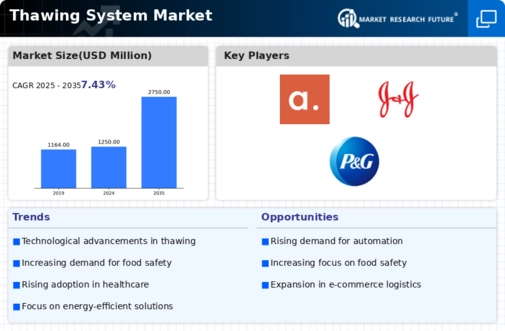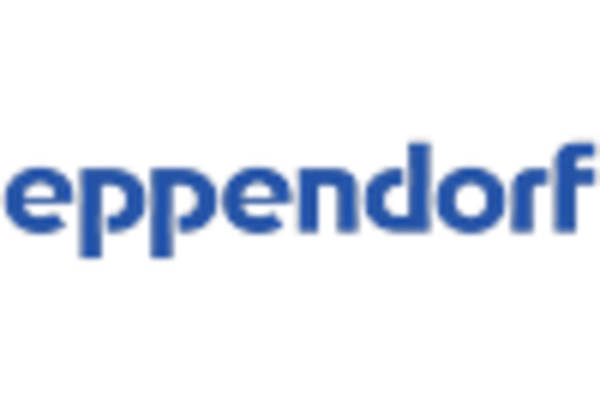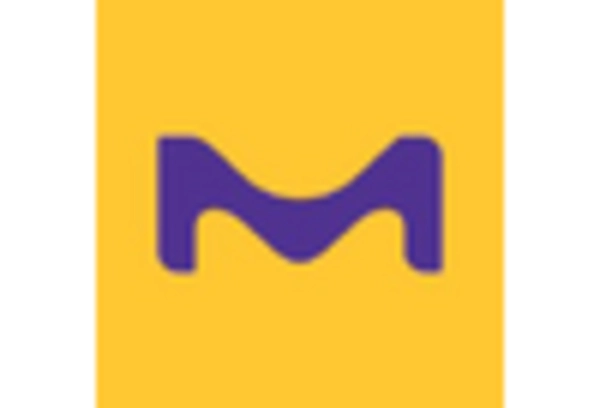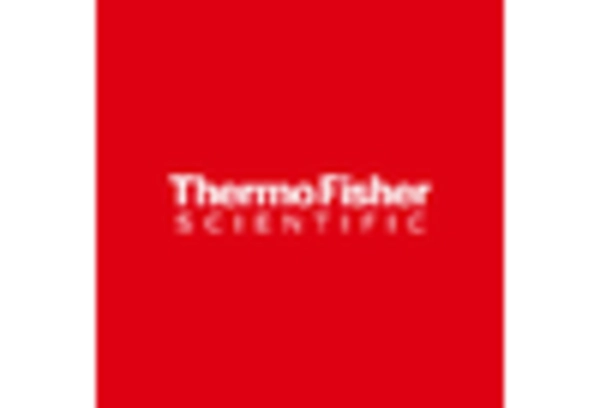-
Definition
-
Scope of the Study
- Research Objective
- Assumptions
- Limitations
-
Introduction
-
Primary Research
-
Secondary Research
-
Market Size Estimation
-
Drivers
-
Restraints
-
Opportunities
-
Challenges
-
Macroeconomic Indicators
-
Technology Trends & Assessment
-
Porter’s Five Forces Analysis
- Bargaining Power of Suppliers
- Bargaining Power of Buyers
- Threat of New Entrants
- Threat of Substitutes
- Intensity of Rivalry
-
Value Chain Analysis
-
Investment Feasibility Analysis
-
Pricing Analysis
-
Chapter 6. Global Thawing System Market, by Type
-
Introduction
-
Manual Devices
-
Market Estimates & Forecast, by Region, 2020-2027
-
Market Estimates & Forecast, by Country, 2020-2027
-
Automated Devices
-
Market Estimates & Forecast, by Region, 2020-2027
-
Market Estimates & Forecast, by Country, 2020-2027
-
Chapter 7. Global Thawing System Market, by Sample Type
-
Introduction
-
Blood
-
Market Estimates & Forecast, by Region, 2020-2027
-
Market Estimates & Forecast, by Country, 2020-2027
-
Plasma
-
Market Estimates & Forecast, by Region, 2020-2027
-
Market Estimates & Forecast, by Country, 2020-2027
-
Stem Cells
-
Market Estimates & Forecast, by Region, 2020-2027
-
Market Estimates & Forecast, by Country, 2020-2027
-
Whole Blood & Red Blood Cells
-
Market Estimates & Forecast, by Region, 2020-2027
-
Market Estimates & Forecast, by Country, 2020-2027
-
Platelets
-
Market Estimates & Forecast, by Region, 2020-2027
-
Market Estimates & Forecast, by Country, 2020-2027
-
Embryos
-
Market Estimates & Forecast, by Region, 2020-2027
-
Market Estimates & Forecast, by Country, 2020-2027
-
Ovum
-
Market Estimates & Forecast, by Region, 2020-2027
-
Market Estimates & Forecast, by Country, 2020-2027
-
Semen
-
Market Estimates & Forecast, by Region, 2020-2027
-
Market Estimates & Forecast, by Country, 2020-2027
-
Others
-
Market Estimates & Forecast, by Region, 2020-2027
-
Market Estimates & Forecast, by Country, 2020-2027
-
Chapter 8. Global Thawing System Market, by End User
-
Introduction
-
Blood Banks & Transfusion Centers
-
Market Estimates & Forecast, by Region, 2020-2027
-
Market Estimates & Forecast, by Country, 2020-2027
-
Hospitals & Diagnostic Laboratories
-
Market Estimates & Forecast, by Region, 2020-2027
-
Market Estimates & Forecast, by Country, 2020-2027
-
Research & Academic Institutes
-
Market Estimates & Forecast, by Region, 2020-2027
-
Market Estimates & Forecast, by Country, 2020-2027
-
Biotechnology & Pharmaceutical Companies
-
Market Estimates & Forecast, by Region, 2020-2027
-
Market Estimates & Forecast, by Country, 2020-2027
-
Others
-
Market Estimates & Forecast, by Region, 2020-2027
-
Market Estimates & Forecast, by Country, 2020-2027
-
Chapter 9. Global Thawing System Market, by Region
-
Introduction
-
Americas
- North America
- South America
-
Europe
- Western Europe
- Eastern Europe
-
Asia-Pacific
- Japan
- China
- India
- Australia
- South Korea
- Rest of Asia-Pacific
-
Middle East & Africa
- Middle East
- Africa
-
Chapter 10. Company Landscape
-
Introduction
-
Market Share Analysis
-
Key Development & Strategies
-
Chapter 11. Company Profiles
-
Helmer Scientific
- Company Overview
- Type Overview
- Financials Overview
- Key Developments
- SWOT Analysis
-
Sarstedt
- Company Overview
- Type Overview
- Financial Overview
- Key Developments
- SWOT Analysis
-
Sartorius
- Company Overview
- Type Overview
- Financial Overview
- Key Development
- SWOT Analysis
-
Biocision
- Company Overview
- Type Overview
- Financial Overview
- Key Development
- SWOT Analysis
-
Boekel Scientific
- Company Overview
- Type Overview
- Financial overview
- Key Developments
- SWOT Analysis
-
Barkey
- Company Overview
- Type Overview
- Financial Overview
- Key Developments
- SWOT Analysis
-
Cardinal Health
- Overview
- Type Overview
- Financial Overview
- Key Developments
- SWOT Analysis
-
GE Healthcare
- Overview
- Type Overview
- Financials
- Key Developments
- SWOT Analysis
-
Thermo Fisher Scientific
- Overview
- Type Overview
- Financials
- Key Developments
- SWOT Analysis
-
Cytotherm
- Overview
- Type Overview
- Financials
- Key Developments
- SWOT Analysis
-
Others
-
Chapter 12 MRFR Conclusion
-
Key Findings
- From CEO’s View point
- Unmet Needs of the Market
-
Key Companies to Watch
-
Predictions for the Thawing System Industry
-
Chapter 13. Appendix
-
-
LIST OF TABLES
-
Global Thawing System Market Synopsis, 2020-2027
-
Global Thawing System Market Estimates and Forecast, 2020-2027
-
(USD Million)
-
Global Thawing System Market, by Region, 2020-2027 (USD Million)
-
Global Thawing System Market, by Type, 2020-2027 (USD Million)
-
Global Thawing System Market, by Sample Type, 2020-2027(USD Million)
-
Global Thawing System Market, by End User, 2020-2027 (USD Million)
-
North America: Thawing System Market, by Type, 2020-2027 (USD Million)
-
North America: Thawing System Market, by Sample Type, 2020-2027 (USD Million)
-
North America: Thawing System Market, by End User, 2020-2027 (USD Million)
-
US: Thawing System Market, by Type, 2020-2027 (USD Million)
-
US: Thawing System Market, by Sample Type, 2020-2027 (USD Million)
-
US: Thawing System Market, by End User, 2020-2027 (USD Million)
-
Canada: Thawing System Market,by Type, 2020-2027 (USD Million)
-
Canada: Thawing System Market, by Sample Type, 2020-2027 (USD Million)
-
Canada: Thawing System Market, by End User, 2020-2027 (USD Million)
-
South America: Thawing System Market, by Type, 2020-2027 (USD
-
Million)
-
South America: Thawing System Market, by Sample Type, 2020-2027 (USD Million)
-
South America: Thawing System Market, by End User, 2020-2027 (USD Million)
-
Europe: Thawing System Market, by Type, 2020-2027 (USD Million)
-
Europe: Thawing System Market, by Sample Type, 2020-2027 (USD Million)
-
Europe: Thawing System Market, by End User, 2020-2027 (USD Million)
-
Western Europe: Thawing System Market, by Type, 2020-2027 (USD Million)
-
Western Europe: Thawing System Market, by Sample Type, 2020-2027 (USD Million)
-
Western Europe: Thawing System Market, by End User, 2020-2027 (USD Million)
-
Eastern Europe: Thawing System Market, by Type, 2020-2027 (USD Million)
-
Eastern Europe: Thawing System Market, by Sample Type, 2020-2027 (USD Million)
-
Eastern Europe: Thawing System Market, by End User, 2020-2027(USD Million)
-
Asia-Pacific: Thawing System Market, by Type, 2020-2027 (USD Million)
-
Asia-Pacific: Thawing System Market, by Sample Type, 2020-2027 (USD Million)
-
Asia-Pacific: Thawing System Market, by End User, 2020-2027 (USD Million)
-
Middle East & Africa: Thawing System Market, by Type, 2020-2027 (USD Million)
-
Middle East & Africa: Thawing System Market, bySample Type, 2020-2027 (USD Million)
-
Middle East & Africa: Thawing System Market, by End User, 2020-2027 (USD Million)
-
-
LIST OF FIGURES
-
Research Process
-
Segmentation for Global Thawing System Market
-
Segmentation Market Dynamics for Global Thawing System Market
-
Global Thawing System Market Share, by Type, 2020
-
Global Thawing System Market Share, by Sample Type, 2020
-
Global Thawing System Market Share, by End User, 2020
-
Global Thawing System Market Share, by Region, 2020
-
North America: Thawing System Market Share, by Country, 2020
-
Europe: Thawing System Market Share, by Country, 2020
-
Asia-Pacific: Thawing System Market Share, by Country, 2020
-
Middle East & Africa: Thawing System Market Share, by Country, 2020
-
Global Thawing System Market: Company Share Analysis, 2020 (%)
-
Helmer Scientific : Key Financials
-
Helmer Scientific : Segmental Revenue
-
Helmer Scientific : Geographical Revenue
-
Sarstedt : Key Financials
-
Sarstedt : Segmental Revenue
-
Sarstedt : Geographical Revenue
-
Sartorius : Key Financials
-
Sartorius : Segmental Revenue
-
Sartorius : Geographical Revenue
-
Biocision : Key Financials
-
Biocision : Segmental Revenue
-
Biocision : Geographical Revenue
-
Boekel Scientific : Key Financials
-
Boekel Scientific : Segmental Revenue
-
Boekel Scientific . Geographical Revenue
-
Barkey : Key Financials
-
Barkey : Segmental Revenue
-
Barkey : Geographical Revenue
-
Cardinal Health : Key Financials
-
Cardinal Health : Segmental Revenue
-
Cardinal Health : Geographical Revenue
-
Thermo Fisher Scientific : Key Financials
-
Thermo Fisher Scientific : Segmental Revenue
-
Thermo Fisher Scientific : Geographical Revenue
-
Cytotherm : Key Financials
-
Cytotherm : Segmental Revenue
-
Cytotherm : Geographical Revenue
-
Chromogenex Technologies LTD: Key Financials
-
Chromogenex Technologies LTD: Segmental Revenue
-
Chromogenex Technologies LTD: Geographical Revenue

















Leave a Comment